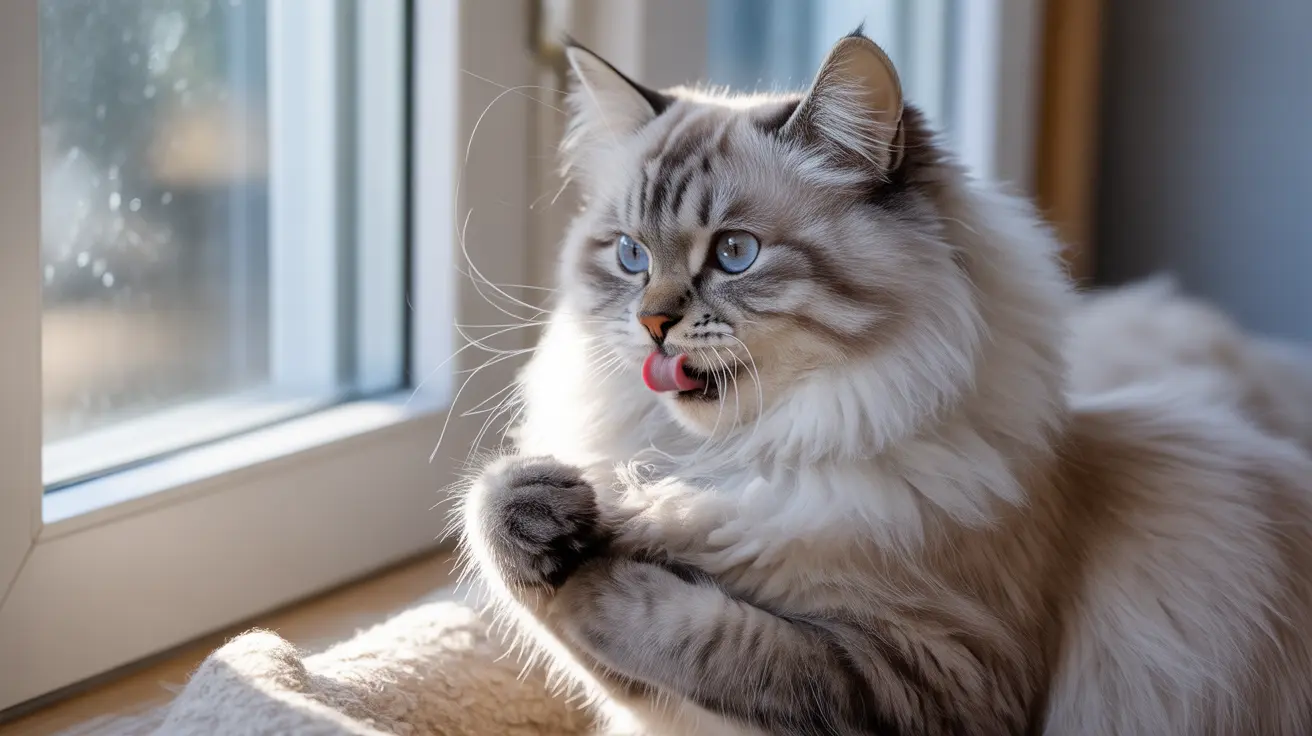Understanding Cat Nipple Basics
Most cats have between six to eight nipples arranged in two parallel rows along their underside, extending from their chest to their lower abdomen. This number can vary, with some cats having as few as four or as many as ten nipples. Interestingly, the total number doesn't need to be even - it's perfectly normal for a cat to have an odd number of nipples.
Each nipple connects to a mammary gland underneath the skin, forming part of the cat's reproductive system. In female cats, these glands become functional during pregnancy and lactation, producing milk to feed their kittens.
Male vs. Female Cat Nipples
Both male and female cats have nipples, though they serve different purposes. Female cats' nipples are typically more pronounced and become even more noticeable during pregnancy and nursing. Male cats have smaller, less obvious nipples that serve no functional purpose.
The presence of nipples in male cats is a result of early embryonic development, where nipples form before gender differentiation occurs. This is common across all mammals, including humans.
Mammary Gland Development and Function
Each nipple connects to a complex network of mammary tissue, complete with milk ducts and glandular tissue. In female cats, these glands respond to hormonal changes during pregnancy, preparing to produce milk for nursing kittens. Each nipple contains multiple milk ducts - typically 7 to 16 - that open at the tip to deliver milk.
The mammary system is supplied by its own network of blood vessels and nerves, making it highly sensitive and responsive to hormonal changes. This complex system ensures efficient milk production and delivery when needed.
Health Considerations and Warning Signs
While nipples are generally low-maintenance, they can sometimes indicate health issues. Watch for signs such as swelling, redness, discharge, or lumps around the nipple area. These could indicate conditions like mastitis (infection of the mammary glands) or potentially more serious issues like mammary tumors.
Regular examination of your cat's nipples during grooming can help you spot any changes early. This is especially important for unspayed female cats, who are at higher risk for mammary tumors.
Frequently Asked Questions
How many nipples do cats typically have, and can the number vary between individual cats?
Cats typically have 6-8 nipples, but the number can vary from 4 to 10. This variation is completely normal and genetically determined. The number remains constant throughout the cat's life.
Why do male cats have nipples if they cannot nurse kittens?
Male cats have nipples because all mammals develop them in early embryonic stages before gender differentiation occurs. While they serve no functional purpose in males, their presence is completely normal.
How can I tell the difference between normal cat nipples and signs that my cat might be pregnant?
Pregnant cats' nipples typically become larger, pinker, and more pronounced around 3-4 weeks into pregnancy. They may also appear swollen and darker in color. However, only a veterinarian can confirm pregnancy definitively.
What are the common health issues related to cat nipples, such as mastitis or mammary tumors, and what symptoms should I watch for?
Common issues include mastitis (inflammation/infection), characterized by redness, swelling, and warmth, and mammary tumors, which appear as firm lumps. Watch for discharge, discoloration, or changes in size/shape. Any abnormalities should be evaluated by a veterinarian.
How should I care for my cat's nipples to prevent infections or other health problems?
Regular gentle cleaning during grooming is sufficient for most cats. For nursing mothers, keep the area clean and monitor for signs of infection. Spaying female cats before their first heat cycle significantly reduces mammary tumor risk. Always consult your veterinarian about specific care recommendations.






